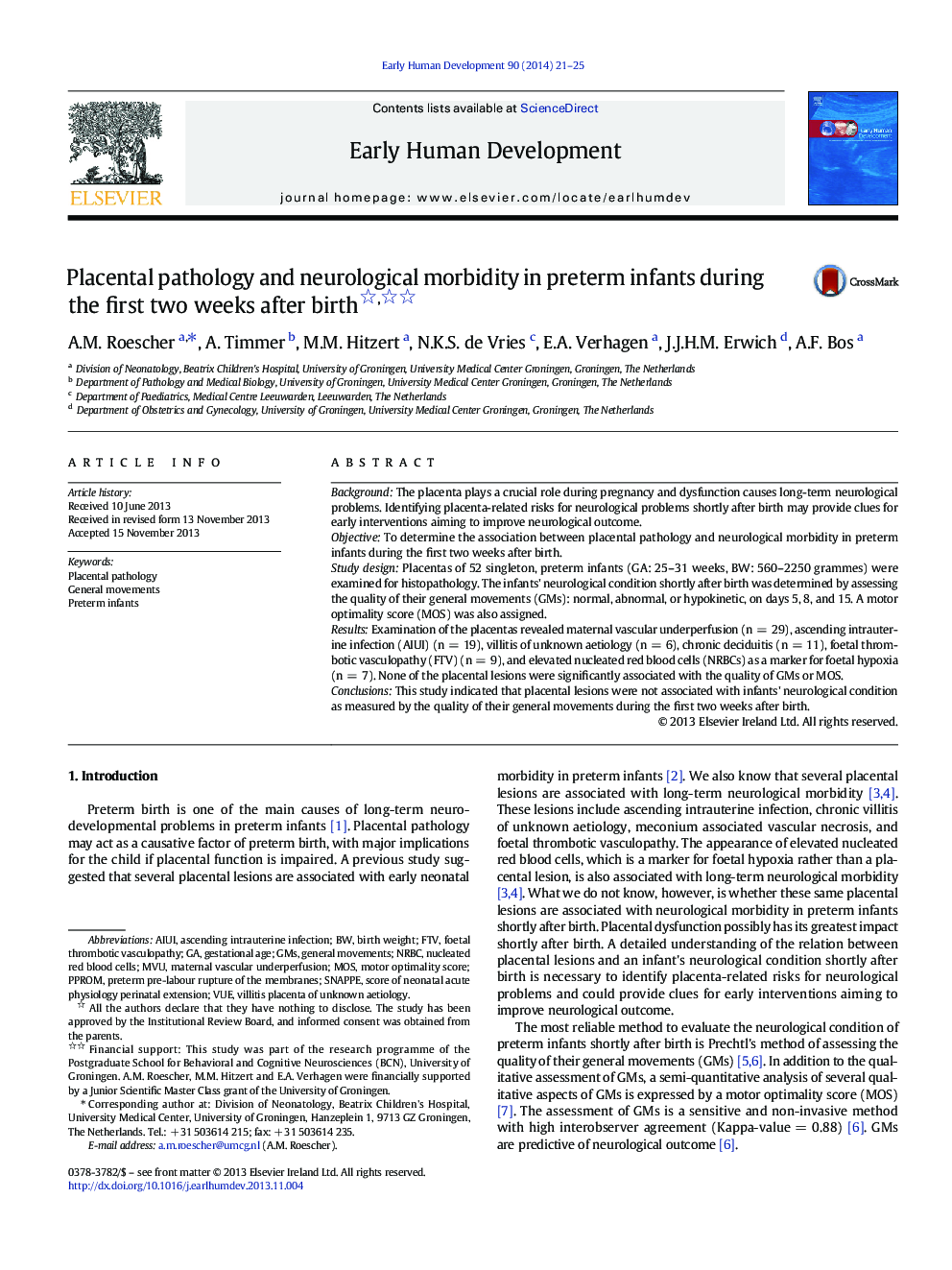| Article ID | Journal | Published Year | Pages | File Type |
|---|---|---|---|---|
| 3918075 | Early Human Development | 2014 | 5 Pages |
BackgroundThe placenta plays a crucial role during pregnancy and dysfunction causes long-term neurological problems. Identifying placenta-related risks for neurological problems shortly after birth may provide clues for early interventions aiming to improve neurological outcome.ObjectiveTo determine the association between placental pathology and neurological morbidity in preterm infants during the first two weeks after birth.Study designPlacentas of 52 singleton, preterm infants (GA: 25–31 weeks, BW: 560–2250 grammes) were examined for histopathology. The infants' neurological condition shortly after birth was determined by assessing the quality of their general movements (GMs): normal, abnormal, or hypokinetic, on days 5, 8, and 15. A motor optimality score (MOS) was also assigned.ResultsExamination of the placentas revealed maternal vascular underperfusion (n = 29), ascending intrauterine infection (AIUI) (n = 19), villitis of unknown aetiology (n = 6), chronic deciduitis (n = 11), foetal thrombotic vasculopathy (FTV) (n = 9), and elevated nucleated red blood cells (NRBCs) as a marker for foetal hypoxia (n = 7). None of the placental lesions were significantly associated with the quality of GMs or MOS.ConclusionsThis study indicated that placental lesions were not associated with infants' neurological condition as measured by the quality of their general movements during the first two weeks after birth.
